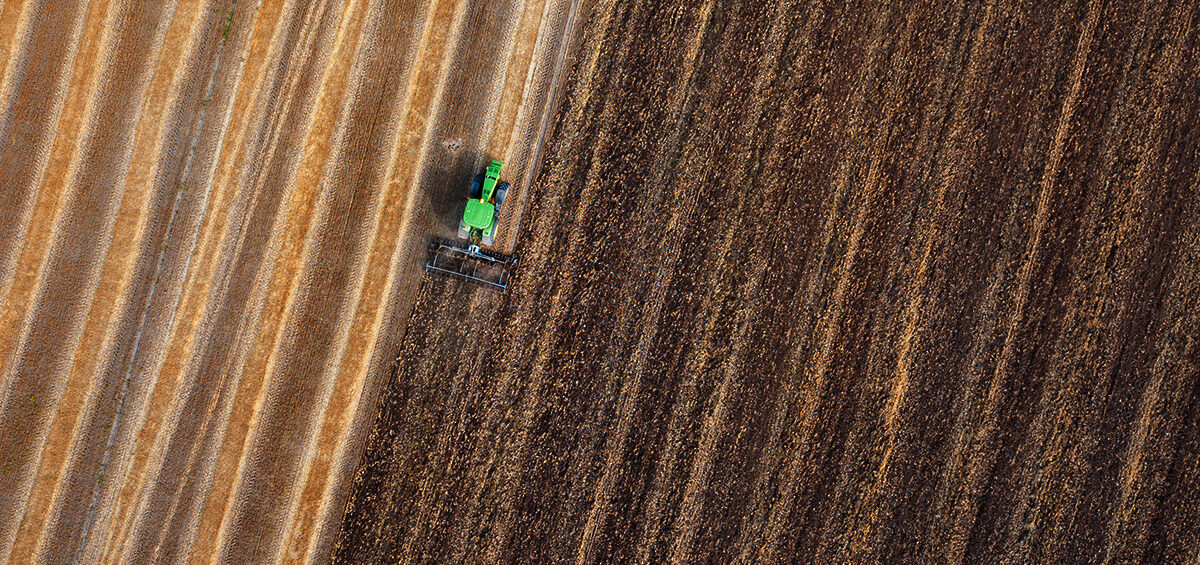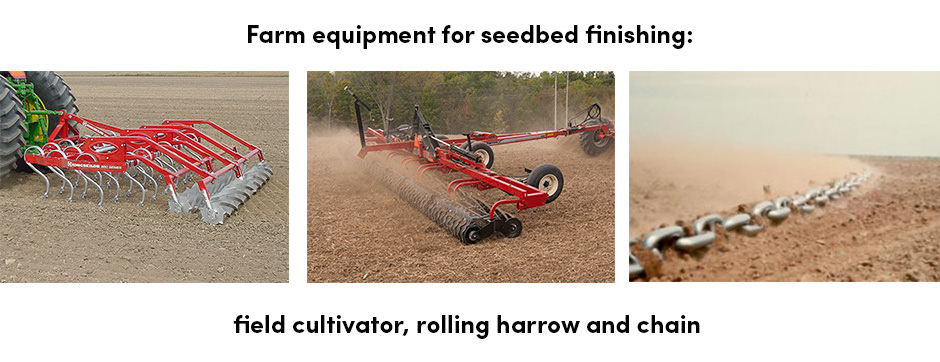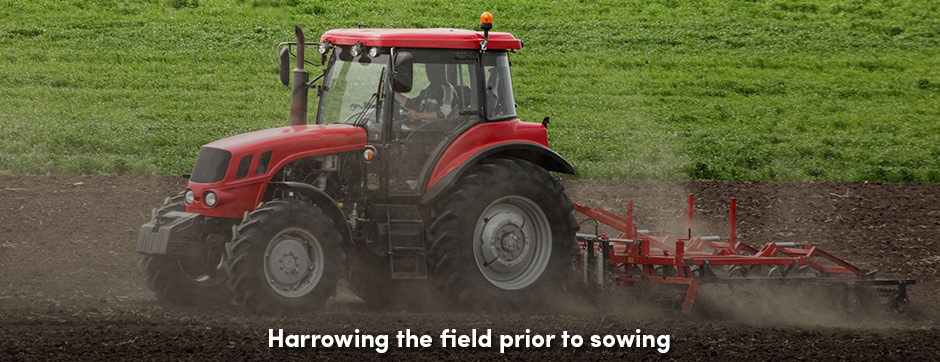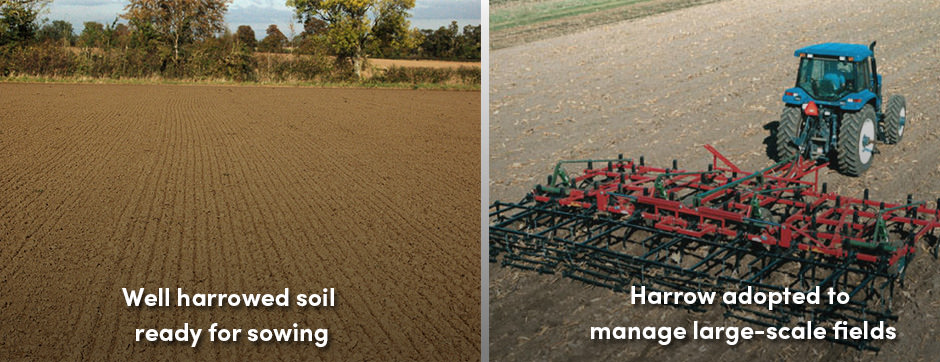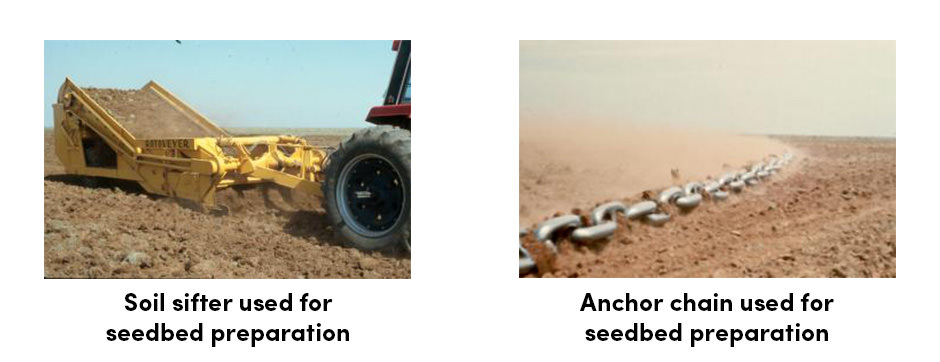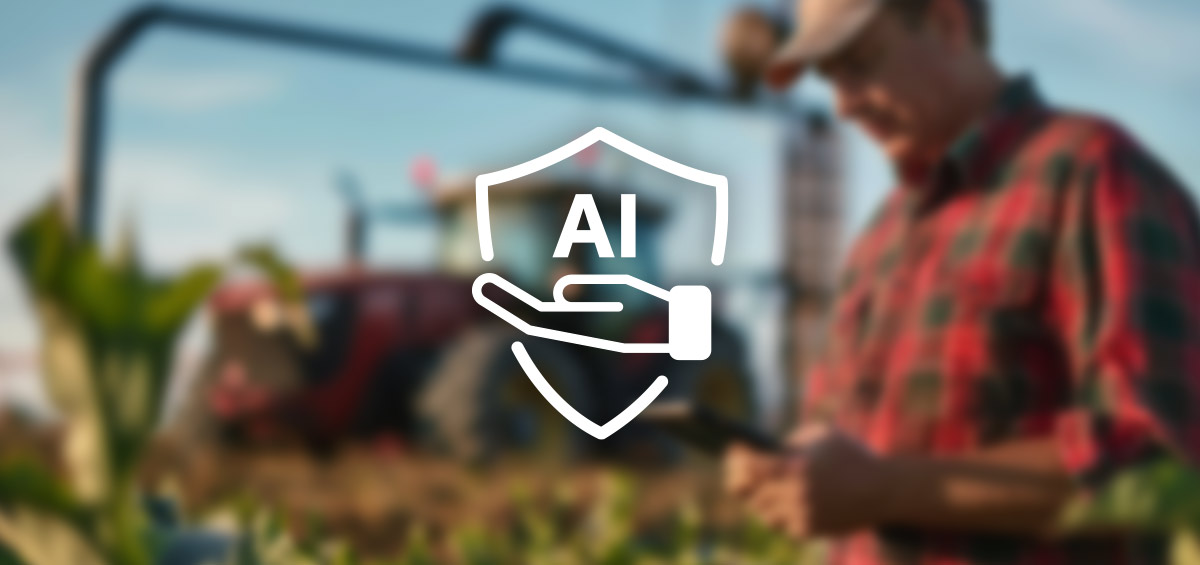Soil preparation prior to growing crops is complex and certainly not an easy task for farmers. It includes many tillage practices, which can be divided into primary tillage, secondary tillage, and seedbed finishing. As the final step in soil preparation, seedbed finishing is a very shallow soil cultivation that occurs at the depth of 6 cm. Farm equipment used for seedbed finishing include the field cultivator, various harrow, and chains which prepare the soil for planting. Farmers often combine several types of seedbed finishers to accomplish the desired soil condition.
The most common type of farm equipment used for seedbed finishing among farmers is harrow. Although there are many different types of harrows, they all have one primary goal- preparing the soil for growing crops.
Beneficial Effects of Harrowing
Harrowing has many beneficial effects on soil and plants:
- Creating of a crumbly layer for planting
- Protecting the soil surface from rapid drying
- Improving both the air and water penetrability into soil
- Improving of microbiological processesImproving of nutrient availability to plants.
The recommended farm practice is to harrow the soil immediately after disking, in order to avoid losing soil moisture.
Harrowing can be also carried out after planting and before the sprouting of young seedlings in order to destroy weed sprouts and break the crust of the soil surface.
Consequences of Improper Harrowing
No matter how simple harrowing seems, if not practiced properly, it can produce poor results. Therefore, soil moisture at the time of harrowing is the most crucial element, along with performing proper farming techniques. The soil suitable for harrowing includes 60-70 % of soil moisture (the amount of total available water in the soil). Harrowing of too moist or too dry soil can disrupt soil properties, making it unsuitable for planting.
A well-harrowed soil has a fine, crumbled, and leveled surface, as well as a low degree of pulverization.
Less Known Farm Equipment for Seedbed Finishing
Unlike the managing of well-prepared soil, on poorly managed soils such as rangeland, farmers use special farm equipment for seedbed finishing called soil sifters and chains. Probably unknown and perhaps strange equipment to some farmers, soil shifters and chains are very important in managing the soil that is full of plant residue and other undesirable objects.
Soil Sifters
Soil sifters clean field from rocks, roots, and plant debris left from trees. While pulling out the rocks and roots, they instantly loosen the soil and prepare it for planting. In considering use of the soil sifter, a farmer should take care to not use it on too rocky, too wet, or too dry soils.
Anchor Chains
Although anchor chains are used in farming for clearing the land of trees and roots, they also have an important role in seedbed preparation of debris-lettered soils. Pulled in a ”U” shape between two tractors, anchor chains loosen the soil and prepare it for broadcast sowing. They are also used after the sowing in order to cover the seeds.
Using of anchor chains is an expensive farm practice, so many aspects need to be considered before and during use of the chains;
- Chain size
- Soil type
- Soil condition at the time of chaining.
For example, dry and clay soils require multiple passes with a chain, while sandy loam soils only one. On the other hand, chaining of sandy soils should be avoided because chains may burrow into the soil.
Farm Knowledge – the Key to Successful Farming
Successful farming begins with well-prepared soil. To prepare it properly, farmers must have knowledge of all farm tillage practices in order to achieve desired results: healthy and vigorous plants and high yields.
Image sources: Suggest-Keywords || Kongskilde || Unverferth Farm Equipment || Revegetation Equipment Catalog
Use Farm Management Software For Proper Soil Management
AGRIVI Farm Management Software is a comprehensive digital platform that helps farmers to plan their crop rotation, keep soil analysis records, and perform crop management, including tillage, fertilization, pest protection, and irrigation. The software also guides you on how to prepare the soil for planting by giving you best practice processes in the form of tasks for over 80 different crops, for all types of production.
